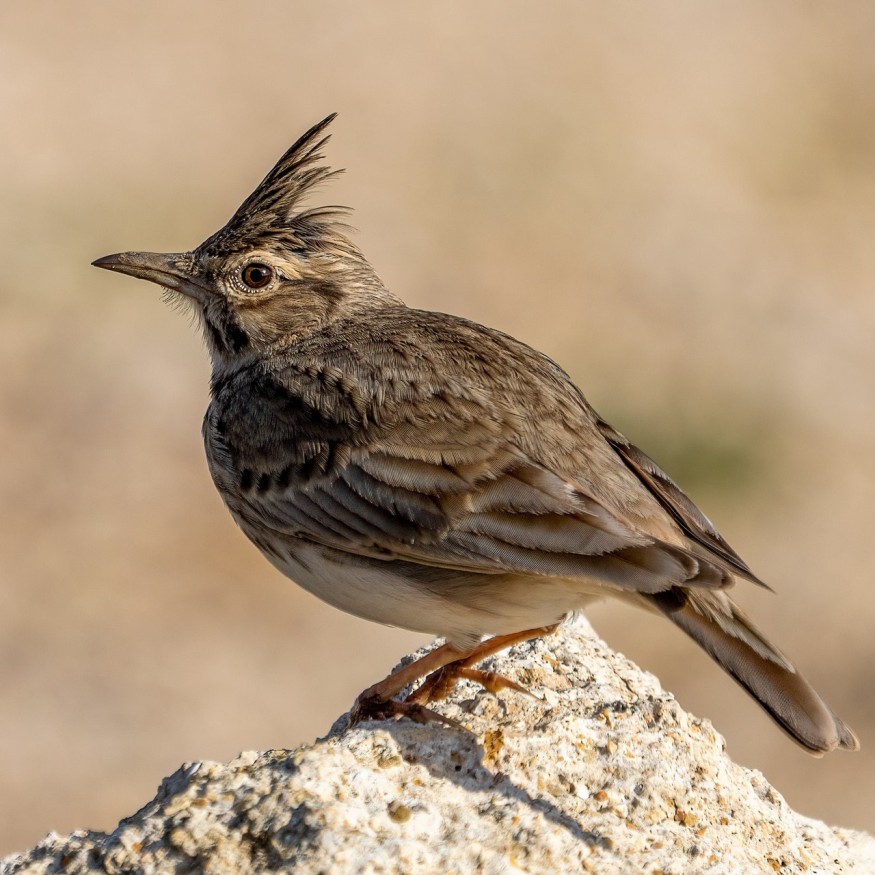Waldorf cat owners are unhappy with the cat ban imposed by town authorities as a solution to protecting the crested lark species
Some cat owners in the German town of Waldorf have been ordered by authorities to keep their pets indoors until the end of August. This is to protect the rare bird, crested lark, during its breeding season.
In 2016, the crested lark Galerida cristata was assessed by the International Union for Conservation of Nature (IUCN). Due to its declining population, it was included in the IUCN Red List of Threatened Species.

Arie Trouborst and Han Somsen, both of Tilbert College's Department of Public Law and Administration, published an article interpreting the European Union (EU) Birds and Habitats Directives.
According to their interpretation, the directives have significant implications for managing free-roaming domestic cats. They added that stray and feral cats must be removed or controlled because cats pose a threat to protected bird species.
The crested lark has recently adapted to steppe landscapes and human-altered landscapes, such as open agricultural fields. As a result, the birds build messy nests of grass on the ground. Where the terrain allows, nests are depressed in the ground and lined with grass or other vegetation.
Read also : Accused Cat Wins $125,000 Settlement Against Illegal Trespassing Charges in Bellevue, Washington
In their initiative to protect and save the crested lark, Waldorf officials have begun banning cats from roaming the streets to prevent the feline hunters from reaching the lark's nests.
This applies to all cats in the southern part of the town. The directive is to be repeated for the next three years.
Authorities in Waldorf explained that the survival of the threatened species depends, among other things, on each chick.
Cat owners, on the other hand, are not enthusiastic about this decision and call the cat ban a disproportionate measure.
The Rhein-Neckar-Zeitung district reported on Wednesday that the head of the Local Animal Protection Association is taking legal action to challenge the ban on cats.
About Crested Larks
The crested lark's breeding season is from March to June or July in the north of its range, from April in Spain, and from March to August in Pakistan and India.
In Senegambia, it lays its eggs from September to June, in Mali from April to May, in Nigeria from November to March and May, in Ethiopia from December to March, in Somalia from April to May, and in East Africa in March.
Crested larks are often monogamous and typically lay 3 to 5 eggs.
The species feeds on invertebrates and plant materials such as leaves and seeds.
Other habitats of the crested lark include savanna, shrubland, grassland, marine intertidal, artificial or terrestrial, and artificial or aquatic and marine habitats.
Currently, no conservation measures are planned for this species in Europe. Experts point out that wide-scale conservation measures are needed for the Crested Lark.
These include maintaining traditional, low-intensity agricultural practices. The experts call for additional research focusing on the biological processes that influence the distribution and abundance of this species.
© 2026 NatureWorldNews.com All rights reserved. Do not reproduce without permission.





